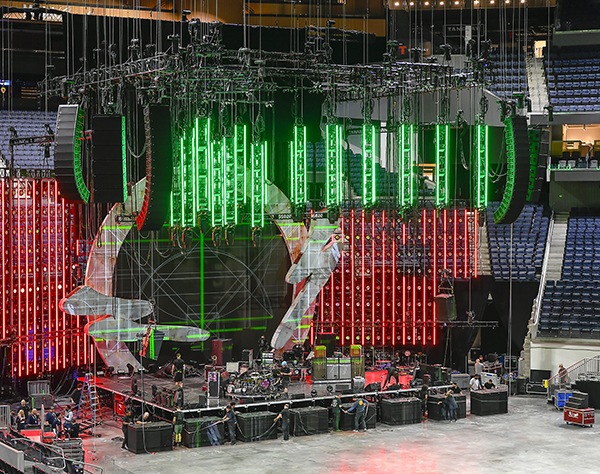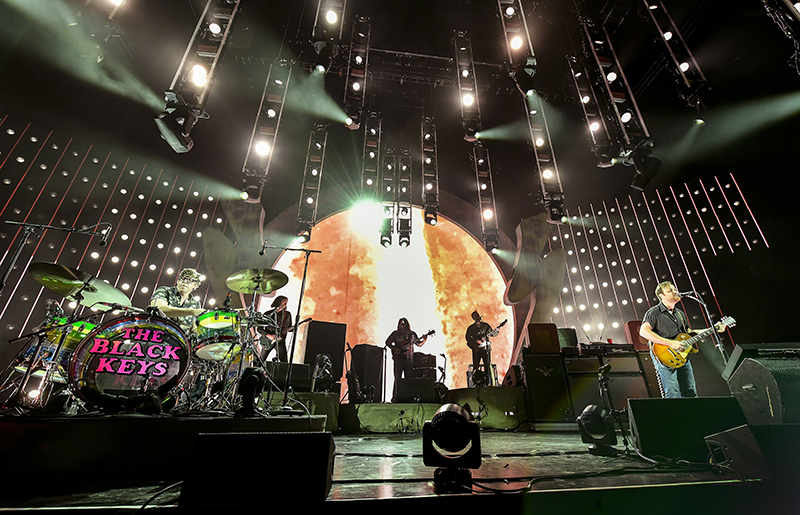On tour late last year, lead guitarist Dan Auerbach of the Black Keys had a habit of introducing the songs “10 A.M. Automatic” and “Thickfreakness” as “basement songs.” If these words are indeed accurate descriptors of those tunes, perhaps others heard on a 31-date trek that wound down for the holidays in late November could be called “garage songs.” However they’re defined, one thing is certain: Wherever you turned in the set list, you were confronted with the type of raw, primal, rock ‘n’ roll energy characteristically spawned in both residential locations.
“In audio terms this show is about as pure to the original intent of rock ‘n’ roll as you can get these days,” says front of house engineer Jason Tarulli, who like the founding members of the band, Auerbach and drummer Patrick Carney, hails from Akron, OH. “Everyone plays their instruments, there is no tracking, not even a solitary click or anything. It’s totally straightforward and to the point.”
Tarulli, along with system engineer Mark Brnich and monitor engineer Neal Jensen, form a sonically skilled triumvirate that continues to guide the tour in the opening months of 2020. The show is wider ranging in comparison to other past tours, thanks to the inclusion of three additional members onstage: Steve Marion on guitar, Zack Gabbard on bass guitar and backing vocals, and Andy Gabbard on guitar and backing vocals.

Direct Influence
This isn’t a show with in-ear monitors, or wireless instrument or vocal mics of any kind. On stage there are wedges, side fills, a towering stack of guitar amps behind Auerbach the crew calls “Mt. Shredmore,” and consistent volumes that Jensen has measured at 104-106 dB SPL. Having direct influence upon many of the decisions made all along the audio chain, the process of dealing with this formidable stage volume expressed itself early on, starting with the choice of PA.
Provided by Eighth Day Sound (Cleveland, LA, London and Sydney), it centers around a healthy core of 18 d&b audiotechnik KSL8 enclosures flown per side as the mains along with a contingent of d&b SL-SUB subwoofers, which go airborne at a rate of six per side. A total of 24 ground-dwelling d&b B22 subs span the front of the stage. As a further complement, side hangs of 14 more KSL8s per side were added, bringing the coverage potential to just about the 180-degree mark from the stage. Audio power for the system is delivered by 30-plus d&b D80 amplifiers.

“The first time I ran into a d&b system was while listening to another band out at Red Rocks in Colorado,” Tarulli relates. “The fidelity of the boxes captured my attention, and equally as impressive was the fact that there was no bleed coming back to the stage. Sound projected out the front of the cabinets stayed within its intended area of coverage. I thought then and there that they’d be perfect for times when I had a really loud band onstage like the Black Keys.”















